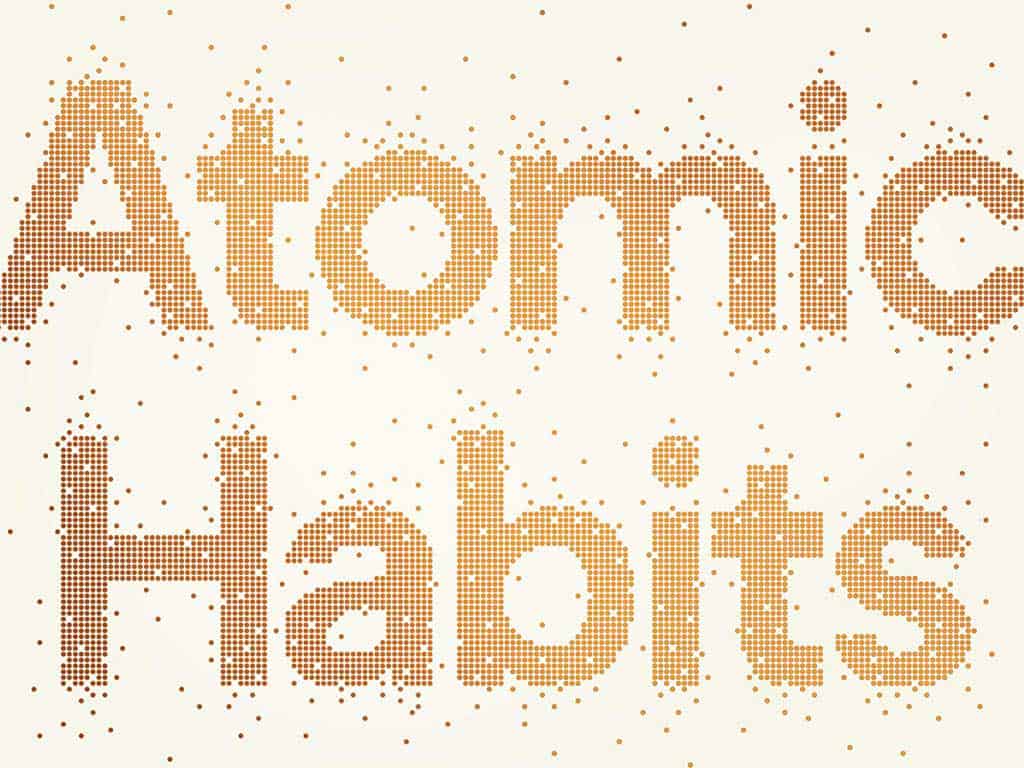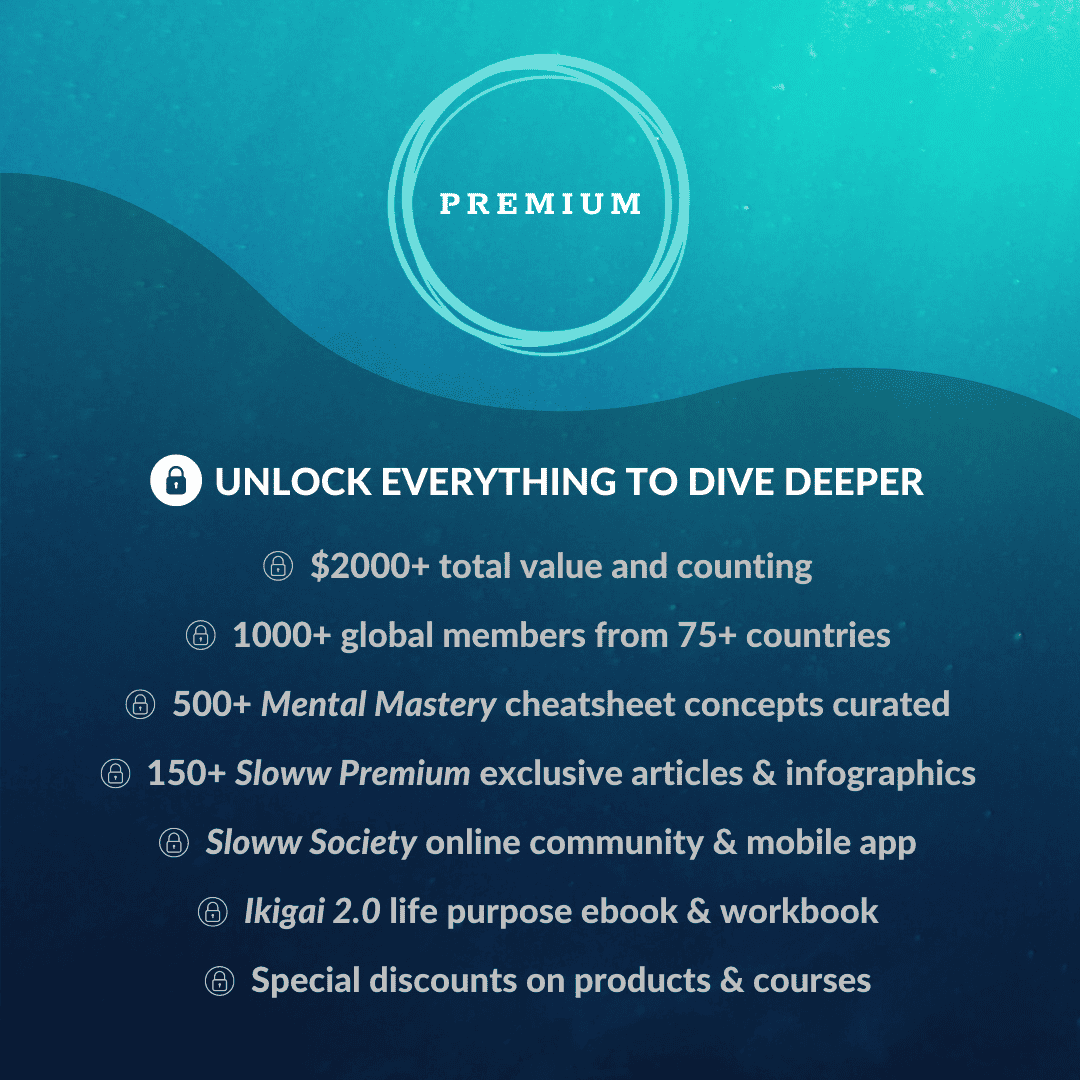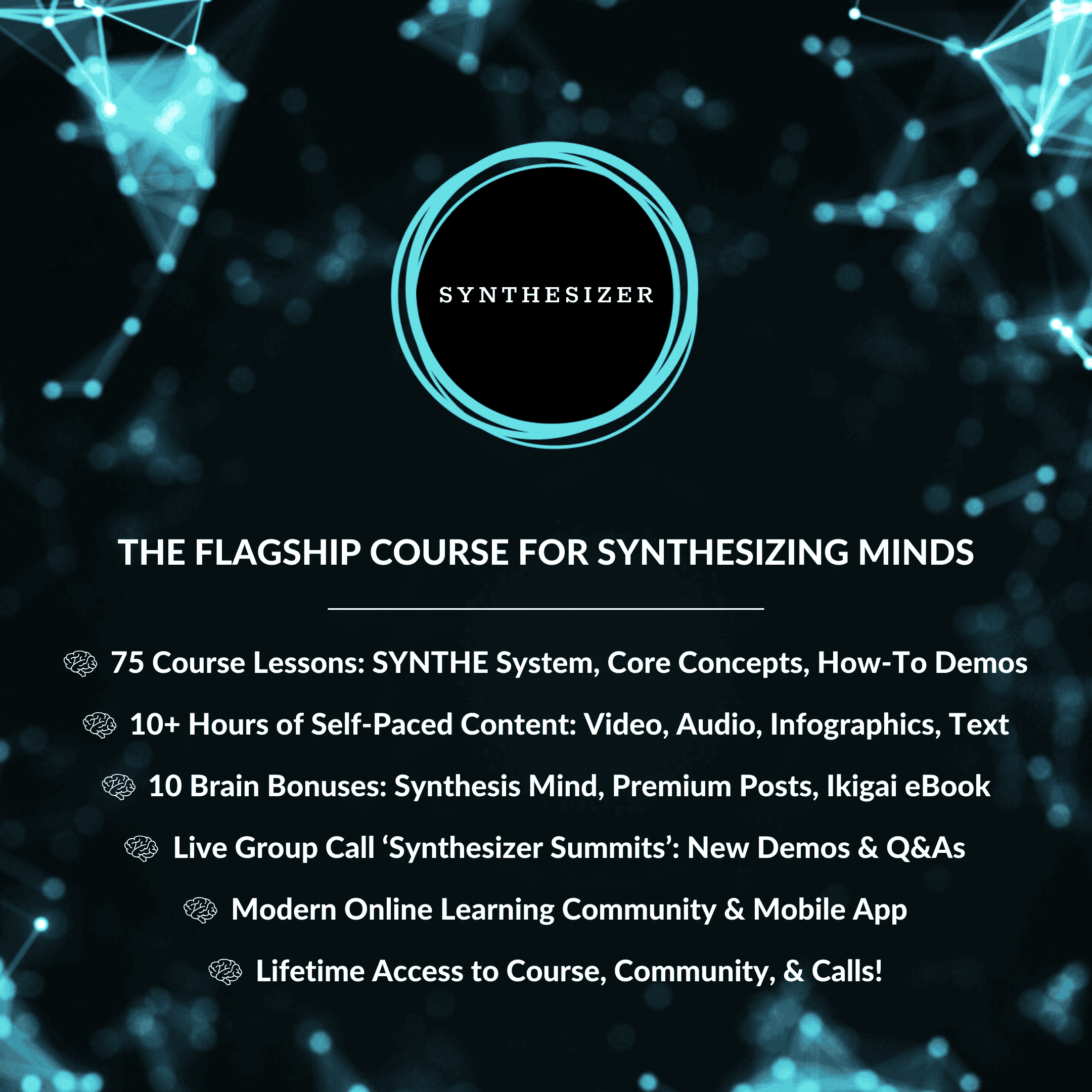This is a detailed book summary of Atomic Habits by James Clear.
🔒 How to Build Effective Habits with “Atomic Habits” by James Clear (+ Infographics)
In Atomic Habits (Amazon), James Clear outlines “an easy and proven way to build good habits and break bad ones.”
This book is jam-packed with philosophy, psychology, and practicality. I learned just as much about the brain, genes, and identity as I did about habits. I took 12,500+ words of notes that I cut down by over 60% to create this summary.
James Clear is a writer, author, and speaker focused on the science of habit formation, behavior change, continuous improvement, and human potential. In his words:
“The central question I’m trying to answer through my work is, ‘How can we live better?’“
Here’s a good video introduction. It’s 45 minutes long, so feel free to skip through it to get the gist. Or, watch the entire thing for a pretty good video summary of Atomic Habits highlights.
Quick Housekeeping:
- All quotes are from the author, James Clear, unless otherwise noted.
- I’ve organized my notes into my own themes.
- I’ve added emphasis to quotes in bold.
Book Summary Contents: click a link to jump to that section below
- Purpose of the Book
- Habit Myth Busting & Habit Wisdom
- How to Build Good Habits & Break Bad Habits (+ Definitions & Formulas)
- Systems vs Goals & Measuring Progress
- Understanding the Brain, Genes, Personality, & Talents
- Beliefs, Identity, Tribe Influence, & Desire
- Human Behavior, Behavior Change, Feelings/Emotions, & Environment

Building Better Habits with Atomic Habits by James Clear (Book Summary)
The Purpose of Atomic Habits
What are Atomic Habits?
- “Just as atoms are the building blocks of molecules, atomic habits are the building blocks of remarkable results.”
- “This is the meaning of the phrase atomic habits—a regular practice or routine that is not only small and easy to do, but also the source of incredible power; a component of the system of compound growth.”
- “Changes that seem small and unimportant at first will compound into remarkable results if you’re willing to stick with them for years.”
About the Book:
- “Human behavior is always changing: situation to situation, moment to moment, second to second. But this book is about what doesn’t change. It’s about the fundamentals of human behavior.”
- “While science supports everything I’ve written, this book is not an academic research paper; it’s an operating manual. You’ll find wisdom and practical advice front and center as I explain the science of how to create and change your habits in a way that is easy to understand and apply.”
- “What I offer you is a synthesis of the best ideas smart people figured out a long time ago as well as the most compelling discoveries scientists have made recently. My contribution, I hope, is to find the ideas that matter most and connect them in a way that is highly actionable.”

Habit Myth Busting & Habit Wisdom
Habit Myth Busting:
I’ve noticed experts always debunk popular myths. James Clear is no exception. Here were the habit myths he addressed:
- Habits = Freedom: “Habits do not restrict freedom. They create it. In fact, the people who don’t have their habits handled are often the ones with the least amount of freedom.”
- Systems > Goals: “My results had very little to do with the goals I set and nearly everything to do with the systems I followed.”
- Effective Habits: “There are no good habits or bad habits. There are only effective habits. That is, effective at solving problems.”
- No Life Hacks: “Building better habits isn’t about littering your day with life hacks. It’s not about flossing one tooth each night or taking a cold shower each morning or wearing the same outfit each day.”
- Clarity > Motivation: “Many people think they lack motivation when what they really lack is clarity. It is not always obvious when and where to take action. Some people spend their entire lives waiting for the time to be right to make an improvement.”
- Behavior Connectedness: “No behavior happens in isolation. Each action becomes a cue that triggers the next behavior.”
- Environment > Motivation: “Motivation Is Overrated; Environment Often Matters More…Conventional wisdom holds that motivation is the key to habit change. Maybe if you really wanted it, you’d actually do it. But the truth is, our real motivation is to be lazy and to do what is convenient. And despite what the latest productivity best seller will tell you, this is a smart strategy, not a dumb one.”
- Frequency > Time: “There is nothing magical about time passing with regard to habit formation. It doesn’t matter if it’s been twenty-one days or thirty days or three hundred days. What matters is the rate at which you perform the behavior. You could do something twice in thirty days, or two hundred times. It’s the frequency that makes the difference.”
- Boredom Threatens Success: “The greatest threat to success is not failure but boredom. We get bored with habits because they stop delighting us. The outcome becomes expected. And as our habits become ordinary, we start derailing our progress to seek novelty. Perhaps this is why we get caught up in a never-ending cycle, jumping from one workout to the next, one diet to the next, one business idea to the next. As soon as we experience the slightest dip in motivation, we begin seeking a new strategy—even if the old one was still working. As Machiavelli noted, ‘Men desire novelty to such an extent that those who are doing well wish for a change as much as those who are doing badly.'”
Wisdom-Filled One-Liners:
- “Habits are the compound interest of self-improvement.”
- “You do not rise to the level of your goals. You fall to the level of your systems.”
- “The quality of our lives often depends on the quality of our habits.”
- “It is your commitment to the process that will determine your progress.”
- “The most effective form of motivation is progress.”
- “Behind every system of actions are a system of beliefs.”
- “Your habits shape your identity, and your identity shapes your habits.”
- “The most practical way to change who you are is to change what you do.”
- “Identity change is the North Star of habit change.”
- “Quite literally, you become your habits.”
- “All behavior is driven by the desire to solve a problem.”
- “Every habit is just an obstacle to getting what you really want.”
- “How we feel influences how we act, and how we act influences how we feel.”
- “You have to standardize before you can optimize.”
- “In the long-run, we become a product of the environment that we live in.”
- “Boredom is perhaps the greatest villain on the quest for self-improvement.”
- “After I removed the mental candy from my environment, it became much easier to eat the healthy stuff.”
- “The costs of your good habits are in the present. The costs of your bad habits are in the future.”
- “Incentives can start a habit. Identity sustains a habit.”
- “The secret to getting results that last is to never stop making improvements.”
- “That’s the power of atomic habits. Tiny changes. Remarkable results.”
- “The seed of every habit is a single, tiny decision.”
- “Habits are mental shortcuts learned from experience.”
- “A lack of self-awareness is poison. Reflection and review is the antidote.”
How to Build Good Habits & Break Bad Habits (+ Habit Definitions & Formulas)
Step-by-Step Plan for Building Good Habits (paraphrased):
- “Triggers your brain to initiate a behavior. It is a bit of information that predicts a reward…Noticing the reward. Most common cues are time and location. Strategies like implementation intentions and habit stacking. Make the cue a big part of your environment.”
- “A craving is created when you assign meaning to a cue. Your brain constructs an emotion or feeling to describe your current situation, and that means a craving can only occur after you have noticed an opportunity. Motivational force behind every habit…Every craving is linked to a desire to change your internal state…Wanting the reward. The expectation of a rewarding experience that motivates us to act. Strategies like temptation bundling.”
- “The actual habit you perform (can take the form of a thought or an action). You just need to get your reps in. Repetition/practice. Response (sacrifice of energy) always precedes reward (the collection of resources).”
- “Satisfy your craving. Increases the odds that a behavior will be repeated next time. It completes the habit loop. Cardinal Rule of Behavior Change: What is immediately rewarded is repeated. What is immediately punished is avoided. Reward is on the other side of sacrifice.”
How to Break a Bad Habit:
- Inversion of the 1st Law (Cue): Make it Invisible.
- Inversion of the 2nd Law (Craving): Make it Unattractive.
- Inversion of the 3rd Law (Response): Make it Difficult.
- Inversion of the 4th Law (Reward): Make it Unsatisfying.
Habit Definitions:
- Habit: “A routine or behavior that is performed regularly—and, in many cases, automatically.”
- Implementation Intention: “A plan you make beforehand about when and where to act. That is, how you intend to implement a particular habit. ‘When situation X arises, I will perform response Y.'”
- Habit Stacking: “Identify a current habit you already do each day and then stack your new behavior on top.”
- Temptation Bundling: “Linking an action you want to do with an action you need to do.”
Habit Formulas:
- Implementation Intention: I will (BEHAVIOR) at (TIME) in (LOCATION)
- Habit Stacking: After (CURRENT HABIT), I will (NEW HABIT)
- Habit Stacking + Temptation Bundling:
- After (CURRENT HABIT), I will (HABIT I NEED)
- After (HABIT I NEED), I will (HABIT I WANT)
- Habit Stacking + Habit Tracking: After (CURRENT HABIT), I will (TRACK MY HABIT)
- Mastery = Habits + Deliberate Practice
Systems vs Goals & Measuring Progress
Systems vs Goals:
- “A systems-first mentality provides the antidote. When you fall in love with the process rather than the product, you don’t have to wait to give yourself permission to be happy. You can be satisfied anytime your system is running.”
- “It’s remarkable what you can build if you just don’t stop. It’s remarkable the business you can build if you don’t stop working. It’s remarkable the body you can build if you don’t stop training. It’s remarkable the knowledge you can build if you don’t stop learning. It’s remarkable the fortune you can build if you don’t stop saving. It’s remarkable the friendships you can build if you don’t stop caring. Small habits don’t add up. They compound.“
Measuring Progress:
- Habit Tracking: “Perhaps the best way to measure your progress is with a habit tracker…Habit tracking (1) creates a visual cue that can remind you to act, (2) is inherently motivating because you see the progress you are making and don’t want to lose it, and (3) feels satisfying whenever you record another successful instance of your habit. Furthermore, habit tracking provides visual proof that you are casting votes for the type of person you wish to become, which is a delightful form of immediate and intrinsic gratification.”
- 1 Percent Better: “If you can get 1 percent better each day for one year, you’ll end up thirty-seven times better by the time you’re done. Conversely, if you get 1 percent worse each day for one year, you’ll decline nearly down to zero. What starts as a small win or a minor setback accumulates into something much more.”
- Time: “Time magnifies the margin between success and failure. It will multiply whatever you feed it. Good habits make time your ally. Bad habits make time your enemy.“
- Outcomes: “Your outcomes are a lagging measure of your habits. Your net worth is a lagging measure of your financial habits. Your weight is a lagging measure of your eating habits. Your knowledge is a lagging measure of your learning habits. Your clutter is a lagging measure of your cleaning habits. You get what you repeat.“
- Reflection and Review: “Reflection can also bring a sense of perspective. Daily habits are powerful because of how they compound, but worrying too much about every daily choice is like looking at yourself in the mirror from an inch away. You can see every imperfection and lose sight of the bigger picture. There is too much feedback. Conversely, never reviewing your habits is like never looking in the mirror. You aren’t aware of easily fixable flaws—a spot on your shirt, a bit of food in your teeth. There is too little feedback. Periodic reflection and review is like viewing yourself in the mirror from a conversational distance. You can see the important changes you should make without losing sight of the bigger picture. You want to view the entire mountain range, not obsess over each peak and valley.”
Understanding the Brain, Genes, Personality, & Talents
How the Brain Works:
- “The world has changed much in recent years, but human nature has changed little.”
- “The human brain did not evolve for life in a delayed-return environment. The earliest remains of modern humans, known as Homo sapiens sapiens, are approximately two hundred thousand years old. These were the first humans to have a brain relatively similar to ours. In particular, the neocortex—the newest part of the brain and the region responsible for higher functions like language—was roughly the same size two hundred thousand years ago as today. You are walking around with the same hardware as your Paleolithic ancestors.“
- “After thousands of generations in an immediate-return environment, our brains evolved to prefer quick payoffs to long-term ones.”
- “We can only be rational and logical after we have been emotional. The primary mode of the brain is to feel; the secondary mode is to think. Our first response—the fast, nonconscious portion of the brain—is optimized for feeling and anticipating. Our second response—the slow, conscious portion of the brain—is the part that does the ‘thinking.’ Psychologists refer to this as System 1 (feelings and rapid judgments) versus System 2 (rational analysis). The feeling comes first (System 1); the rationality only intervenes later (System 2). This works great when the two are aligned, but it results in illogical and emotional thinking when they are not.”
- “Time inconsistency: The way your brain evaluates rewards is inconsistent across time. You value the present more than the future. Usually, this tendency serves us well. A reward that is certain right now is typically worth more than one that is merely possible in the future. But occasionally, our bias toward instant gratification causes problems.”
- “Some experts estimate that half of the brain’s resources are used on vision. Given that we are more dependent on vision than on any other sense, it should come as no surprise that visual cues are the greatest catalyst of our behavior. For this reason, a small change in what you see can lead to a big shift in what you do.”
Genes:
- “Genes do not determine your destiny. They determine your areas of opportunity. As physician Gabor Mate notes, ‘Genes can predispose, but they don’t predetermine.’ The areas where you are genetically predisposed to success are the areas where habits are more likely to be satisfying. The key is to direct your effort toward areas that both excite you and match your natural skills, to align your ambition with your ability.“
Personality:
- “Our habits are not solely determined by our personalities, but there is no doubt that our genes nudge us in a certain direction.”
- “Bundled together, your unique cluster of genetic traits predispose you to a particular personality. Your personality is the set of characteristics that is consistent from situation to situation. The most proven scientific analysis of personality traits is known as the ‘Big Five,’ which breaks them down into five spectrums of behavior.
- 1. Openness to experience: from curious and inventive on one end to cautious and consistent on the other.
- 2. Conscientiousness: organized and efficient to easygoing and spontaneous.
- 3. Extroversion: outgoing and energetic to solitary and reserved.
- 4. Agreeableness: friendly and compassionate to challenging and detached.
- 5. Neuroticism: anxious and sensitive to confident, calm, and stable.”
Natural Talents:
- “You don’t have time to try every career, date every eligible bachelor, or play every musical instrument. Thankfully, there is an effective way to manage this conundrum, and it is known as the explore/exploit trade-off.”
- “As you explore different options, there are a series of questions you can ask yourself to continually narrow in on the habits and areas that will be most satisfying to you:
- What feels like fun to me, but work to others?
- What makes me lose track of time?
- Where do I get greater returns than the average person?
- What comes naturally to me?”
- “The secret to maximizing your odds of success is to choose the right field of competition…Habits are easier to perform, and more satisfying to stick with, when they align with your natural inclinations and abilities…you want to play a game where the odds are in your favor.”
- “If you can’t find a game where the odds are stacked in your favor, create one.”
- “When you can’t win by being better, you can win by being different. By combining your skills, you reduce the level of competition, which makes it easier to stand out.”
Beliefs, Identity, Tribe Influence, & Desire
Beliefs:
- “Every action you take is a vote for the type of person you wish to become. No single instance will transform your beliefs, but as the votes build up, so does the evidence of your new identity.”
- “Progress requires unlearning. Becoming the best version of yourself requires you to continuously edit your beliefs, and to upgrade and expand your identity.”
Identity:
- “The true question is: ‘Are you becoming the type of person you want to become?’ The first step is not what or how, but who. You need to know who you want to be.”
- “It is a simple two-step process:
- 1. Decide the type of person you want to be. (What do you want to stand for? What are your principles and values? Who do you wish to become?)
- 2. Prove it to yourself with small wins.“
- “True behavior change is identity change. You might start a habit because of motivation, but the only reason you’ll stick with one is that it becomes part of your identity.”
- “The ultimate form of intrinsic motivation is when a habit becomes part of your identity. It’s one thing to say I’m the type of person who wants this. It’s something very different to say I’m the type of person who is this.“
- “When your behavior and your identity are fully aligned, you are no longer pursuing behavior change. You are simply acting like the type of person you already believe yourself to be.”
- “Your habits contribute most of the evidence that shapes your identity. In this way, the process of building habits is actually the process of becoming yourself.”
- “Behavior that is incongruent with the self will not last.”
- “Your behaviors are usually a reflection of your identity.”
- “We are continually undergoing microevolutions of the self.”
- “Your habits are how you embody your identity.”
Tribe Influence on Individual Identity:
- “Humans are herd animals. We want to fit in, to bond with others, and to earn the respect and approval of our peers. Such inclinations are essential to our survival. For most of our evolutionary history, our ancestors lived in tribes.”
- “Nothing sustains motivation better than belonging to the tribe. It transforms a personal quest into a shared one…The shared identity begins to reinforce your personal identity.”
- “Whenever we are unsure how to act, we look to the group to guide our behavior.”
- “The normal behavior of the tribe often overpowers the desired behavior of the individual.”
- “This is one reason we care so much about the habits of highly effective people. We try to copy the behavior of successful people because we desire success ourselves.”
- “Join a culture where (1) your desired behavior is the normal behavior and (2) you already have something in common with the group.”
Desire:
- “Desire is the engine that drives behavior. Every action is taken because of the anticipation that precedes it. It is the craving that leads to the response.”
- “Desire is the difference between where you are now and where you want to be in the future. Even the tiniest action is tinged with the motivation to feel differently than you do in the moment.”
- “It is the idea of pleasure that we chase…Desire is pursued. Pleasure ensues from action.”
- “Happiness is simply the absence of desire. When you observe a cue, but do not desire to change your state, you are content with the current situation. Happiness is not about the achievement of pleasure (which is joy or satisfaction), but about the lack of desire. It arrives when you have no urge to feel differently. Happiness is the state you enter when you no longer want to change your state. However, happiness is fleeting because a new desire always comes along. As Caed Budris says, ‘Happiness is the space between one desire being fulfilled and a new desire forming.’ Likewise, suffering is the space between craving a change in state and getting it.”
- “Peace occurs when you don’t turn your observations into problems. The first step in any behavior is observation. You notice a cue, a bit of information, an event. If you do not desire to act on what you observe, then you are at peace. Craving is about wanting to fix everything. Observation without craving is the realization that you do not need to fix anything. Your desires are not running rampant. You do not crave a change in state. Your mind does not generate a problem for you to solve. You’re simply observing and existing.”
- “With a big enough why you can overcome any how. Friedrich Nietzsche, the German philosopher and poet, famously wrote, ‘He who has a why to live for can bear almost any how.’ This phrase harbors an important truth about human behavior. If your motivation and desire are great enough (that is, why are you are acting), you’ll take action even when it is quite difficult. Great craving can power great action—even when friction is high.”
- “Being curious is better than being smart. Being motivated and curious counts for more than being smart because it leads to action. Being smart will never deliver results on its own because it doesn’t get you to act. It is desire, not intelligence, that prompts behavior. As Naval Ravikant says, ‘The trick to doing anything is first cultivating a desire for it.’“
- “Suffering drives progress. The source of all suffering is the desire for a change in state. This is also the source of all progress. The desire to change your state is what powers you to take action. It is wanting more that pushes humanity to seek improvements, develop new technologies, and reach for a higher level. With craving, we are dissatisfied but driven. Without craving, we are satisfied but lack ambition.”
- “Desire initiates. Pleasure sustains. Wanting and liking are the two drivers of behavior. If it’s not desirable, you have no reason to do it. Desire and craving are what initiate a behavior. But if it’s not enjoyable, you have no reason to repeat it. Pleasure and satisfaction are what sustain a behavior. Feeling motivated gets you to act. Feeling successful gets you to repeat.“
- “The sweet spot of desire occurs at a 50/50 split between success and failure. Half of the time you get what you want. Half of the time you don’t. You need just enough ‘winning’ to experience satisfaction and just enough ‘wanting’ to experience desire.”
- “Self-control is difficult because it is not satisfying. A reward is an outcome that satisfies your craving. This makes self-control ineffective because inhibiting our desires does not usually resolve them. Resisting temptation does not satisfy your craving; it just ignores it. It creates space for the craving to pass. Self-control requires you to release a desire rather than satisfy it.”
Human Behavior, Behavior Change, Feelings/Emotions, & Environment
Human Behavior:
- “It is the anticipation of a reward—not the fulfillment of it—that gets us to take action.”
- “Researchers estimate that 40 to 50 percent of our actions on any given day are done out of habit. This is already a substantial percentage, but the true influence of your habits is even greater than these numbers suggest. Habits are automatic choices that influence the conscious decisions that follow.”
- “We like to think that we are in control…The truth, however, is that many of the actions we take each day are shaped not by purposeful drive and choice but by the most obvious option.”
- “‘Disciplined’ people are better at structuring their lives in a way that does not require heroic willpower and self-control. In other words, they spend less time in tempting situations.”
- “The people with the best self-control are typically the ones who need to use it the least.”
- “Out of all the possible actions we could take, the one that is realized is the one that delivers the most value for the least effort. We are motivated to do what is easy.“
- “Redesign your life so the actions that matter most are also the actions that are easiest to do.”
- “Using technology to automate your habits is the most reliable and effective way to guarantee the right behavior.”
Three Layers of Behavior Change:
- Changing your identity (what you believe, who we wish to become): “This level is concerned with changing your beliefs: your worldview, your self-image, your judgments about yourself and others. Most of the beliefs, assumptions, and biases you hold are associated with this level.”
- Changing your process (what you do): “This level is concerned with changing your habits and systems: implementing a new routine at the gym, decluttering your desk for better workflow, developing a meditation practice. Most of the habits you build are associated with this level.”
- Changing your outcomes (what you get, what they want to achieve): “This level is concerned with changing your results: losing weight, publishing a book, winning a championship. Most of the goals you set are associated with this level of change.”
Feelings & Emotions:
- “Emotions drive behavior. Every decision is an emotional decision at some level. Whatever your logical reasons are for taking action, you only feel compelled to act on them because of emotion. In fact, people with damage to emotional centers of the brain can list many reasons for taking action but still will not act because they do not have emotions to drive them. This is why craving comes before response. The feeling comes first, and then the behavior.“
- “Your response tends to follow your emotions. Our thoughts and actions are rooted in what we find attractive, not necessarily in what is logical. Two people can notice the same set of facts and respond very differently because they run those facts through their unique emotional filter. This is one reason why appealing to emotion is typically more powerful than appealing to reason. If a topic makes someone feel emotional, they will rarely be interested in the data. This is why emotions can be such a threat to wise decision making. Put another way: most people believe that the reasonable response is the one that benefits them: the one that satisfies their desires. To approach a situation from a more neutral emotional position allows you to base your response on the data rather than the emotion.”
- “Your actions reveal how badly you want something. If you keep saying something is a priority but you never act on it, then you don’t really want it. It’s time to have an honest conversation with yourself. Your actions reveal your true motivations.”
- “Feelings come both before and after the behavior. Before acting, there is a feeling that motivates you to act—the craving. After acting, there is a feeling that teaches you to repeat the action in the future—the reward.”
- Cue > Craving (Feeling) > Response > Reward (Feeling)
- “The difference between being in motion and taking action: When you’re in motion, you’re planning and strategizing and learning. Those are all good things, but they don’t produce a result. Action, on the other hand, is the type of behavior that will deliver an outcome.”
- “Motion makes you feel like you’re getting things done. But really, you’re just preparing to get something done. When preparation becomes a form of procrastination, you need to change something. You don’t want to merely be planning. You want to be practicing.“
- “Our expectations determine our satisfaction. The gap between our cravings and our rewards determines how satisfied we feel after taking action. If the mismatch between expectations and outcomes is positive (surprise and delight), then we are more likely to repeat a behavior in the future. If the mismatch is negative (disappointment and frustration), then we are less likely to do so.”
Environment:
- “Our environment determines the suitability of our genes and the utility of our natural talents.”
- “As behavioral scientist Jason Hreha writes, ‘Habits are, simply, reliable solutions to recurring problems in our environment.'”
- “Environment is the invisible hand that shapes human behavior. Despite our unique personalities, certain behaviors tend to arise again and again under certain environmental conditions.”
- “In this way, the most common form of change is not internal, but external: we are changed by the world around us. Every habit is context dependent.”
- “A stable environment where everything has a place and a purpose is an environment where habits can easily form.”
- “The way to improve these qualities is not by wishing you were a more disciplined person, but by creating a more disciplined environment.”
- “Optimize your environment…This is the secret to self-control.”
- “I like to refer to this strategy as addition by subtraction…when we remove the points of friction that sap our time and energy, we can achieve more with less effort. (This is one reason tidying up can feel so good: we are simultaneously moving forward and lightening the cognitive load our environment places on us.)”
- “The central idea is to create an environment where doing the right thing is as easy as possible. Much of the battle of building better habits comes down to finding ways to reduce the friction associated with our good habits and increase the friction associated with our bad ones.”
Have you read Atomic Habits? How do you plan to implement better habits into your life? Please share in the comments.
Another book I’m a big fan of is Essentialism by Greg McKeown.
In fact, I created a Premium Member post that breaks down how you can apply both books together in your life: 🔒 “Essentialism” + “Atomic Habits” Synthesis: How to Pick a Path & Make Progress (+ Infographic)
You May Also Enjoy:
- Browse all book summaries.
- 🔒 How to Build Effective Habits with “Atomic Habits” by James Clear (+ Infographics)
- 🔒 “Essentialism” + “Atomic Habits” Synthesis: How to Pick a Path & Make Progress (+ Infographic)
- 🔒 “Golden Circle” + “Three Layers of Behavior Change” Synthesis: How to Better Understand Your Brain with Simon Sinek & James Clear (+ Infographic)





